My application stores images on S3 and then proxies them through Cloudfront. I'm excited to use the new S3 CORS support so that I can use HTML5 canvas methods (which have a cross-origin policy) but can't seem to configure my S3 and Cloudfront correctly. Still running into "Uncaught Error: SECURITY_ERR: DOM Exception 18" when I try to convert an image to a canvas element.
Here's what I have so far:
S3
<CORSConfiguration>
<CORSRule>
<AllowedOrigin>MY_WEBSITE_URL</AllowedOrigin>
<AllowedMethod>GET</AllowedMethod>
<MaxAgeSeconds>3000</MaxAgeSeconds>
<AllowedHeader>*</AllowedHeader>
</CORSRule>
<CORSRule>
<AllowedOrigin>MY_CLOUDFRONT_URL</AllowedOrigin>
<AllowedMethod>GET</AllowedMethod>
<AllowedHeader>*</AllowedHeader>
</CORSRule>
</CORSConfiguration>
Cloudfront
Origins
Origin Protocol Policy: Match Viewer
HTTP Port: 80
HTTPS Port: 443
Behaviors
Origin: MY_WEBSITE_URL
Object Caching: Use Origin Cache Headers
Forward Cookies: None
Forward Query Strings: Yes
Is there something I'm missing here?
UPDATE : Just tried changing the headers to
<AllowedHeader>Content-*</AllowedHeader>
<AllowedHeader>Host</AllowedHeader>
based on this question Amazon S3 CORS (Cross-Origin Resource Sharing) and Firefox cross-domain font loading
Still no go.
UPDATE: MORE INFO ON REQUEST
Request
URL:https://d1r5nr1emc2xy5.cloudfront.net/uploaded/BAhbBlsHOgZmSSImMjAxMi8wOS8xMC8xOC81NC80Mi85NC9ncmFzczMuanBnBjoGRVQ/32c0cee8
Request Method:GET
Status Code:200 OK (from cache)
UPDATE
I think maybe my request wasn't correct, so I tried enabling CORS with
img.crossOrigin = '';
but then the image doesn't load and I get the error: Cross-origin image load denied by Cross-Origin Resource Sharing policy.








